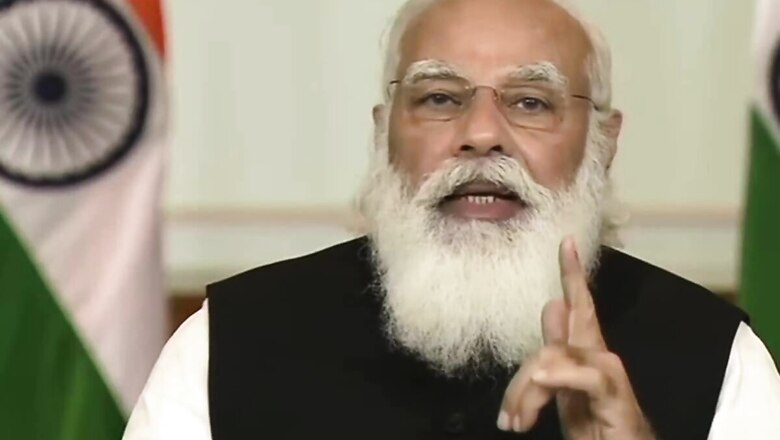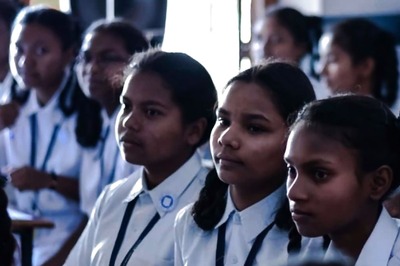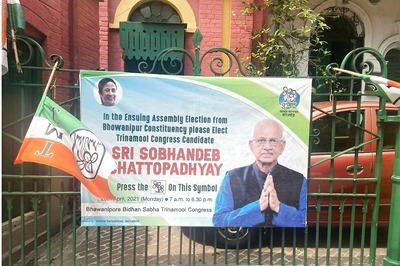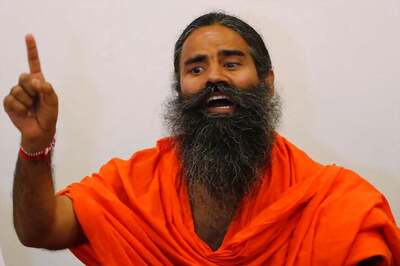
views
The Quad virtual summit constitutes a major step in politically consolidating this group. Its journey began hesitatingly in 2017, with India cautious about throwing its weight fully behind it not only because of the experience of Australia walking out of the incipient group in 2008 under Chinese pressure but also because of uncertainty about the depth of the commitment of the US and Japan to it in the light of their huge economic ties with China and the constraints that flowed from this on any policy of confronting it.
None of the three other members has contiguous borders with China although Japan has a territorial dispute with it over the Senkaku Islands. The defence of these islands is, however, included in the US-Japan defence treaty, which gives Japan protection. India has contiguity with China and a long unsettled border, which India has to defend on its own as India is not an ally of the US. India has, therefore, wanted to keep a certain autonomy in dealing with China and not be pushed into an arrangement in which its distinct and separate interests would be subordinated to the priorities of others. Knowing China’s sensitivities about the Quad, India has been careful not to rub them so as not to disturb the precarious modus vivendi with China on the border and the ties in general. The other consideration has been the reluctance to strengthen ties with a group consisting of three military allies and be progressively drawn into a de facto alliance, with all the external and internal ramifications. Nonetheless, India has remained open to a steady evolution of the group, with initial meetings at Joint Secretary level, elevated to political level with Foreign Ministers, and now the summit.
The collapse of the border agreements with China’s Ladakh aggression would explain India’s readiness to raise its stakes in the Quad. China’s attempt to unilaterally alter the Line of Actual Control (LAC) in Ladakh without provocation has altered our view about respecting its sensitivities beyond a certain point. We seem prepared now to reciprocate China’s policy of containing us even as it engages us. The Quad summit reflects our willingness to signal to China that even as we are ready to stabilise our ties to avoid a conflict, we are ready also to deter China’s aggressive conduct with countries in the Indo-Pacific which feel the heat of China’s new assertiveness. China’s bullying of Australia and the latter’s pushback has given us confidence that despite an internal debate in the country about the wisdom of resisting China robustly because of the huge economic stakes involved, Australia is not likely to repeat its 2007 surrender to China. Japan under Prime Minister Yoshihide Suga has signalled the continuation of the commitment of his predecessor to the Indo-Pacific and the Quad.
ALSO READ| Why the Quad is Necessary to Handle a Perseveringly Aggressive China
Even as disengagement in Ladakh was only partially achieved, India agreed to a Foreign Minister-level meeting of the Quad, ignoring any repercussions of this on the disengagement that remains to be done on the other conflict points along the LAC. With that seemingly not making any rapid progress, India has joined a virtual Quad summit, conveying an uncomfortable political signal to China. India is aware that China’s hopes in re-engaging the US under President Biden in the hope of arresting the downslide in their ties have been belied, and that the US is strengthening its hands before the US-China 2+2 dialogue takes place in Alaska. India has gone along with the US time table. This means a more confident Indian diplomacy towards China. Disengagement in Ladakh is only the start of restoring the status quo ante; it has to be followed by de-escalation which will require more negotiations and verification, which will be long drawn out process. The early signals are not very positive in this regard. India, therefore, cannot wait for accelerated decisions by China on its withdrawals in Ladakh to calibrate the depth of its participation in the Quad.
Our stronger commitment to the Quad comes out clearly in Prime Minister Narendra Modi’s statement at the Summit. It is noteworthy that our earlier efforts to distinguish the Quad from the Indo-Pacific have been jettisoned in the PM’s remarks in which he mentions the uniting element of democracy and the shared commitment to a free, open and inclusive Indo-Pacific that makes the Quad a “force for global good”. He envisages the Quad working together, “closer than ever before” for “advancing our shared values and promoting a secure, stable and prosperous Indo-Pacific”.
Joint Statement and Its Significance
The significance of the Quad leaders being able to issue a joint statement should not be under-estimated. At the earlier official- and political-level meetings, each country issued its own statement, which suggested that the priorities of each not being the same drafting a joint statement would be an arduous exercise. This cast doubts on the seriousness of Quad as a structure, as well as the pace at which it could become more than a diplomatic messaging. It is clear that a lot of homework has been done by the respective diplomatic establishments for some time to be able to agree to a common text.
The joint statement states that the four countries are “united in a shared vision for the free and open Indo-Pacific”…“a region that is free, open, inclusive, healthy, anchored by democratic values, and unconstrained by coercion.” They commit themselves “to promoting a free, open rules-based order, rooted in international law to advance security and prosperity and counter threats to both in the Indo-Pacific and beyond”. The addition of the word “beyond” teasingly extends the scope of the Quad. The statement emphasises again their support for “the rule of law, freedom of navigation and overflight, peaceful resolution of disputes, democratic values, and territorial integrity”, as one more signal to China. The reference to the commitment “to work together and with a range of partners” indicates that select partners in ASEAN (Association of Southeast Asian Nations) and Europe will be invited to work together with the Quad in the future. France is an obvious partner and there are already reports of a joint Quad/France naval exercise. As is to be expected, to allay any feelings in ASEAN that their role and centrality in developing a security architecture in Asia is being eroded by Quad, the statement reaffirms “strong support for ASEAN’s unity and centrality as well as the ASEAN Outlook on the Indo-Pacific”. This is really paying lip service to ASEAN centrality because ASEAN is toothless and has been successfully divided by China. ASEAN has to be kept on board to prevent China to exploit concerns in ASEAN about having to choose between the US and China, given their strong ties with both countries.
In line with Indian thinking and emphasis on a broader agenda, the Quad leaders “pledge to respond to the economic and health impacts of COVID-19, combat climate change, and address shared challenges, including in cyber space, critical technologies, counterterrorism, quality infrastructure investment, and humanitarian-assistance and disaster-relief as well as maritime domains”. It is notable that in most of these issues concerns about China are on the minds of the leaders.
ALSO READ| Rule of Law or Rule of Power: Quad Summit Marks Beginning of a New Great Game
PM Modi has been vocal about availability of COVID-19 vaccines to all countries, especially the developing ones, at affordable prices. India’s own vaccine diplomacy has been pro-active. The joint statement recognises the need for cooperation in health security “to provide safe, affordable, and effective vaccine production and equitable accessfor the Indo-Pacific.” The leaders have called for a “transparent and results-oriented reform at the World Health Organization”. Climate change will be on the Quad agenda. Again, with China in mind, the leaders have agreed to “cooperation on the critical technologies of the future to ensure that innovation is consistent with a free, open, inclusive, and resilient Indo-Pacific”. Japan’s concerns, as well as of others, are addressed with the agreement to “prioritise the role of international law in the maritime domain, particularly as reflected in the United Nations Convention on the Law of the Sea (UNCLOS), and facilitate collaboration, including in maritime security, to meet challenges to the rules-based maritime order in the East and South China Seas”. Thankfully for us, the reference to Myanmar is bare-boned.
Eye on the Future
The three working groups’ set up is the beginning of a Quad structure, which in time will be developed further. The first will be on climate change issues. A vaccine expert group will be set up to implement “our path-breaking commitment to safe and effective vaccine distribution”. The decision to manufacture US vaccine in India with Biological E. Ltd to provide one billion doses to the Indo-Pacific region seems to have been taken. The third group will deal with critical and emerging technologies to facilitate cooperation on international standards and innovative technologies of the future. It has been agreed that experts and senior officials from the four countries will continue to meet regularly; the Foreign Ministers will converse often and meet at least once a year, and an in-person summit will be held by the end of 2021.
US NSA Jake Sullivan has quite rightly said that China, about whom none of the leaders had any illusions, was discussed at the meeting but was not its focus. Coercion of Australia, harassment around the Senkakus, border aggression against India figured in the discussions. According to him, the Quad is now a critical part of the architecture of the Indo-Pacific. Interestingly, cybersecurity incidents impacting Quad members too figured, including attacks against India’s power sector. He dismissed the talk about Quad being a military alliance, though he stated that it has to be worked out at the leaders’ level and that of the working groups on how the Quad can move from freedom of navigation to broader regional security questions.
China’s concerns about the Quad summit are hypocritical. China’s rise has been on the back of US capital and technology to a considerable extent. The economic power it acquired, and with that military power, has been used by it to expand territorially in the western Pacific and globally through the Belt and Road Initiative (BRI), not to mention in the Indian Ocean. Now that defences are being put up against China’s expansionism and violation of international law, India, which has been the latest victim in Ladakh, for China to warn us not to become close to the US and tie us to the US chariot is ridiculous. Even now, the US is China’s biggest economic partner and China is reaching out to the US to ease pressures on it. If China’s 2+2 dialogue is defensive diplomacy, so is the Quad. Its critique of “selective multilateralism” would apply equally to the Russia-India-China group, BRICS as well as the SCO. It has established a Quad in our region—the China-Pakistan-Afghanistan-Nepal group—in which Nepal does not fit at all.
Read all the Latest News, Breaking News and Coronavirus News here




















Comments
0 comment